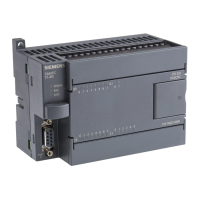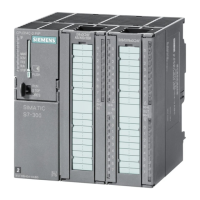Appendix
S7-300 Programmable Controller Hardware and Installation
A5E00105492-01
11-7
Rule 4: Special EMC measures
Some special applications might require special EMC measures (refer to the
section on How to protect digital output modules against inductive surge voltage).
• Connect anti-surge elements to all inductive devices not controlled by S7-300
modules.
• For cabinet or cubicle lighting in the immediate range of your controller, use
incandescent lamps or interference suppressed fluorescent lamps .
Rule 5: Homogeneous reference potential
Create a homogeneous reference potential and ground electrical equipment
whenever possible (refer to the section on Equipotential bonding).
• Install equipotential busbars of sufficient size if potential differences exist or are
to be expected between equipment of your system.
• Make sure you carefully direct your grounding measures. Grounding measures
protect the controller and its functions.
Form a star circuit to connect the equipment in your system and the cabinets
containing central/expansion units to the grounding/protective conductor system.
This prevents the formation of ground loops.
11.2.3 EMC compatible installation of PLC
Introduction
Quite often it is the case that interference suppression measures are not taken until
corruption of user signals is detected after the controller is actually in operation.
Frequently, the causes of such interference are found in inadequate reference
potentials as a result of faulty installation. This section shows you how to avoid
such errors.
Inactive metal parts
Inactive parts are referred to as electrically conductive elements, separated from
active elements by a basic insulating and only subject to electrical potential if an
error occurs.
Installation and ground bonding of inactive metal parts
Bond all inactive metal parts to a large-surface ground when you install the S7-300.
Proper ground bonding ensures a homogeneous reference potential for the
controller and reduces the effect of interference coupling.
The ground connection establishes an electrically conductive interconnection of all
inactive parts. The sum of all interconnected inactive parts is referred to as chassis
ground.
This chassis ground must never develop a hazardous potential even if a fault
occurs. Therefore, chassis ground must be connected to the protective conductor
using cables with an adequate conductor cross-section. To avoid ground loops,
physically separate chassis ground elements (cabinets, parts of the building

